Only If, a design practice based in New York City, has recently unveiled the Narrow House in the Bedford-Stuyvesant neighborhood of Brooklyn. Situated on a slender lot measuring 13’-4” wide by 100’ deep, this architectural feat defies conventional norms with its compact footprint and innovative design approach.

Context and Challenges
The unique dimensions of the Narrow House posed several challenges, primarily revolving around daylight penetration and circulation within the constrained space. Despite zoning regulations dictating the exterior volume, the architects prioritized maximizing natural light through a strategic combination of materials and design elements. The façade, finished predominantly in black stucco, is complemented by a glass curtain wall that floods the interior with daylight while seamlessly integrating with the surrounding urban fabric.
Spatial Organization
A distinctive feature of the Narrow House is its absence of traditional interior walls and corridors. Instead, the layout embraces openness, characterized by an 11-foot clear span that fosters fluid spatial transitions. Utilizing a split-level section, the design delineates different domestic functions without the need for physical barriers. A central perforated steel staircase serves as a vertical lightwell, further enhancing the sense of openness and connectivity between levels.
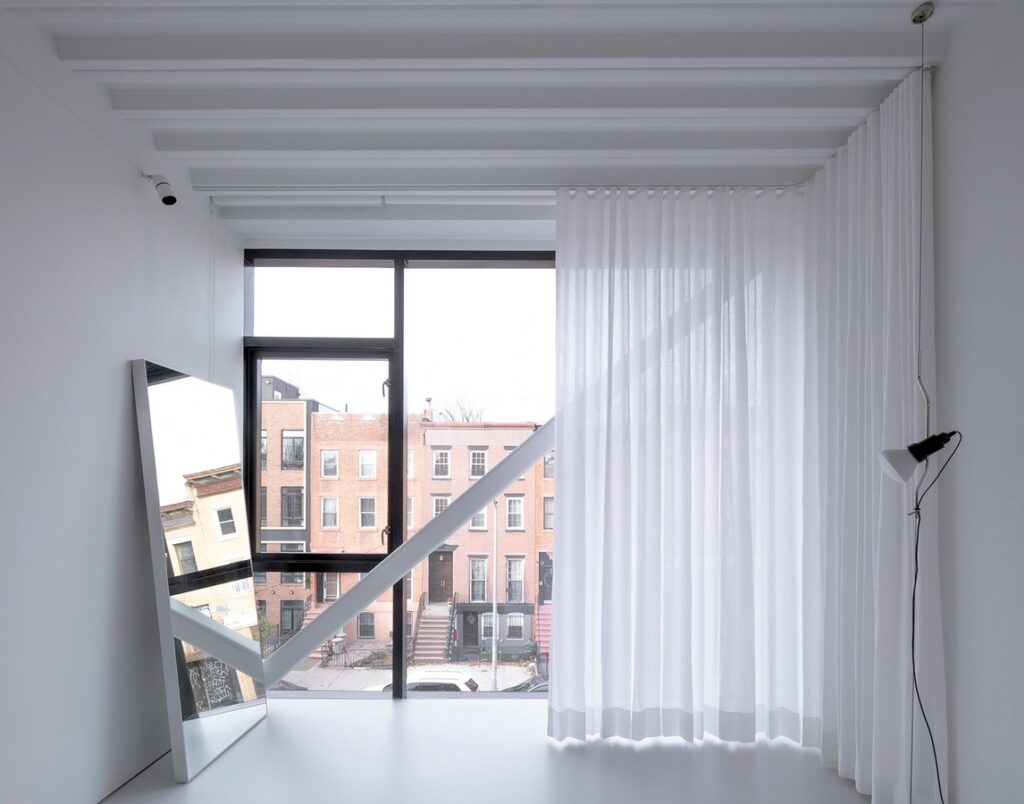
Functional Zones
The ground floor, elevated slightly above street level, serves as a multifunctional space for living, dining, and cooking. A sleek 28-foot-long bar volume, clad in black perforated metal and oak, anchors the kitchen area. Expansive glass doors seamlessly merge indoor and outdoor living, extending the sense of space into the rear yard. Upstairs, the layout accommodates two bedrooms and a versatile work-study area, with the flexibility to convert the latter into a third bedroom if needed. Plywood volumes discreetly house essential amenities such as bathrooms and closets, ensuring privacy without compromising spatial fluidity.
Structural Innovation
The Narrow House employs a structural strategy optimized for its narrow footprint. Reinforced concrete masonry units (CMU) form the lateral walls, while composite concrete and corrugated metal deck floors maximize structural efficiency. The absence of interior shear walls necessitates lateral stability measures, achieved through exposed steel braces strategically integrated into the façade and interior spaces.

Conclusion
In redefining the boundaries of urban living, the Narrow House exemplifies architectural innovation within the constraints of space. Through thoughtful design interventions and a meticulous attention to detail, Only If has transformed a slender lot into a luminous sanctuary that seamlessly blends functionality with aesthetic allure.


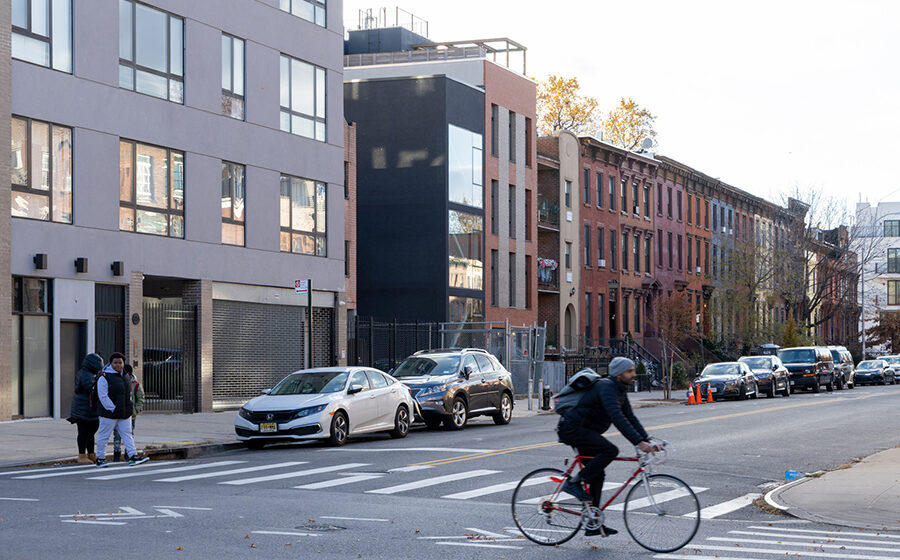
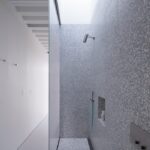
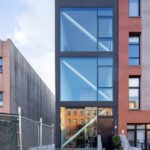
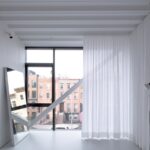
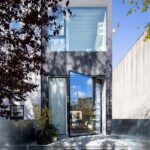


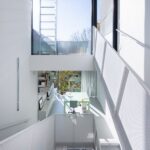
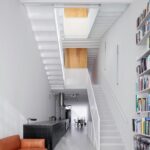
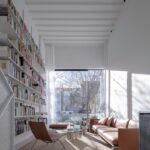
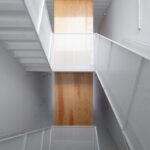
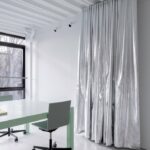
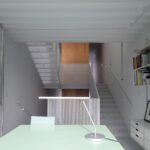
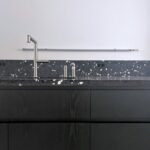

Leave a Reply